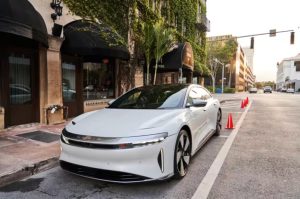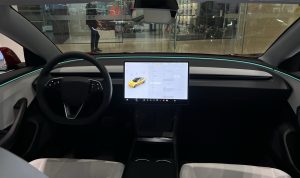Xiaomi’s Electric Cars: Can They Establish a Strong Presence in the New Energy Vehicle Market?
5 min read
Where Does Xiaomi’s Confidence in Car Manufacturing Come From?
Recently, there have been reports circulating within the industry that Xiaomi’s car factory in Yizhuang has been in trial production for nearly a month, producing 50 prototype vehicles per week, as they prepare for the mass production of their first new energy vehicle.
During a previous performance exchange meeting, Xiaomi Group’s CEO, Lu Weibing, revealed that Xiaomi’s car project had successfully completed summer testing and was progressing smoothly, with a clear goal to achieve mass production by the first half of 2024. Additionally, reports from Interface News indicated that Xiaomi’s car project recently obtained approval from the Ministry of Industry and Information Technology (MIIT), with the latest possible approval date being the end of the year.
After much anticipation, Xiaomi’s “car manufacturing dream” has finally reached its final stages. Now the question is, can Xiaomi, as a newcomer to the electric vehicle market, outperform its competitors and become a “dark horse”?
Challenges in Cross-Industry Car Manufacturing
The year 2023 has presented a mixed picture for the new energy vehicle industry in China.
On one hand, in the first half of this year, the new energy vehicle market has shown steady growth month by month, with overall market performance remaining relatively stable. According to Cui Dongshu, Secretary-General of the China Passenger Car Association, new energy passenger car sales reached 7 million units from January to July, a 45% year-on-year increase. Furthermore, the association predicts that China’s annual new energy passenger car sales for 2023 may reach 8.5 million units, with a potential market penetration rate of 36%.
On the other hand, with Tesla lowering its prices, other automakers have followed suit, leading to a continuous price reduction trend in the industry. This has directly resulted in lower overall profit margins, increasing operational pressures on car manufacturers.
Furthermore, within the context of intense competition and the “winner-takes-all” mentality, the enthusiasm of internet giants for entering the car manufacturing sector seems to be waning. Baidu’s autonomous vehicle unit has officially changed its name to “JiYue,” Didi sold its autonomous driving division to Xiaopeng Motors for 5.835 billion Hong Kong dollars (approximately 744 million USD), and Huawei has consistently emphasized its decision not to directly manufacture cars, leaving only a few major players who still pursue independent car manufacturing projects.
Four Key Challenges
This change in attitude is not surprising, given the inherent challenges in cross-industry car manufacturing. Internet giants face four major challenges:
- Technical Complexity: Automobiles are highly complex systems, involving various technologies in areas such as engines, transmissions, chassis, bodywork, electronics, and more. While tech companies may have advantages in areas like smart technology and connectivity, they still need to master and innovate in the core technologies of traditional automobiles, including electrification, safety, and comfort.
- Return on Investment: Car manufacturing is a capital-intensive, high-risk, low-return industry that requires substantial investments in research and development, production, sales, and services. While internet giants have strong financial resources, they are not unlimited. Car manufacturing demands patience and sustained investments, with no expectations of immediate cost recovery and profitability.
- Supply Chain Integration: Automobiles consist of thousands of components, necessitating the establishment of stable and efficient supply chain systems to ensure the quality, quantity, and timeliness of parts. Tech companies entering the car manufacturing field lack the experience and trust base for collaboration with traditional automotive component suppliers, potentially leading to supply chain instability and uncontrollable risks.
- Qualification Requirements: Licenses and certifications from regulatory authorities, such as the National Development and Reform Commission (NDRC) and MIIT, are essential for the production and sale of new energy vehicles. As the industry’s “rookie period” comes to an end, obtaining these qualifications becomes increasingly challenging for latecomers. For example, Baidu chose to partner with established automakers instead of pursuing independent car manufacturing, in part due to these qualification requirements.
In summary, while internet giants have different strategic approaches and market positions, they all face similar challenges related to funding, technology, talent, supply chains, partners, and market demands when entering the car manufacturing industry.
So, Where Does Xiaomi’s Confidence Come From?
Investing in Hardware and Earning from Software?
Compared to other internet giants, Xiaomi and Apple, among other consumer electronics giants, have certain advantages in terms of their industry chain foundations.
For example, in terms of hardware, Xiaomi has a flexible supply chain management and marketing strategy. Xiaomi utilizes an OEM (Original Equipment Manufacturer) model for supply chain management, reducing its own investment and risk. In terms of software, Xiaomi has its own operating system (MIUI), an artificial intelligence platform (Xiao Ai), and an Internet of Things platform (MIoT), which can provide intelligent and connected solutions for automobiles.
Most importantly, Xiaomi can leverage its various institutions, such as Xiaomi Group, Shunwei Capital, Xiaomi Ventures, and Xiaomi Yangtze Industry Fund, to invest in and integrate numerous suppliers, thereby establishing a complete smart automobile industry ecosystem.
Xiaomi’s successful integration into the upstream and downstream of the automotive industry chain is due in part to the accumulated experience in China’s automotive industry. From January to July 2023, China’s sales of new energy passenger vehicles reached 4.42 million units, accounting for 61% of global new energy vehicle sales.
Today, China’s automotive supply chain covers all aspects, from raw materials to complete vehicles, ensuring stable and efficient support for Xiaomi’s car manufacturing. Even in the face of semiconductor shortages (“chip shortages”), the domestic supply chain can meet most demands.
In conclusion, considering their industry chain integration and financial strength, Xiaomi appears well-prepared for electric vehicle production.
During a performance exchange meeting on August 29th, Xiaomi Group’s CEO, Lu Weibing, expressed that Xiaomi’s long-term strategy for making cars is aimed at achieving a top-five position globally. Xiaomi has adopted a full-stack self-development approach and has even established its own car factory, resulting in higher-than-disclosed levels of cash flow investment. As of June 30, 2023, Xiaomi Group’s total cash resources reached 113.2 billion yuan.
Additionally, Xiaomi’s many years of brand management in the smartphone and smart home sectors have already established a brand influence and user awareness. The existing brand ecosystem and user base align well with smart electric vehicles. Xiaomi’s first electric vehicle, positioned as the “ultimate sports car for young people,” can fully leverage Xiaomi’s user advantages.
However, once fully immersed in the new energy vehicle market, Xiaomi will need to find a path that ensures both sales volume and profitability in order to excel in the industry’s “endurance race” and seize opportunities for overtaking the competition.



